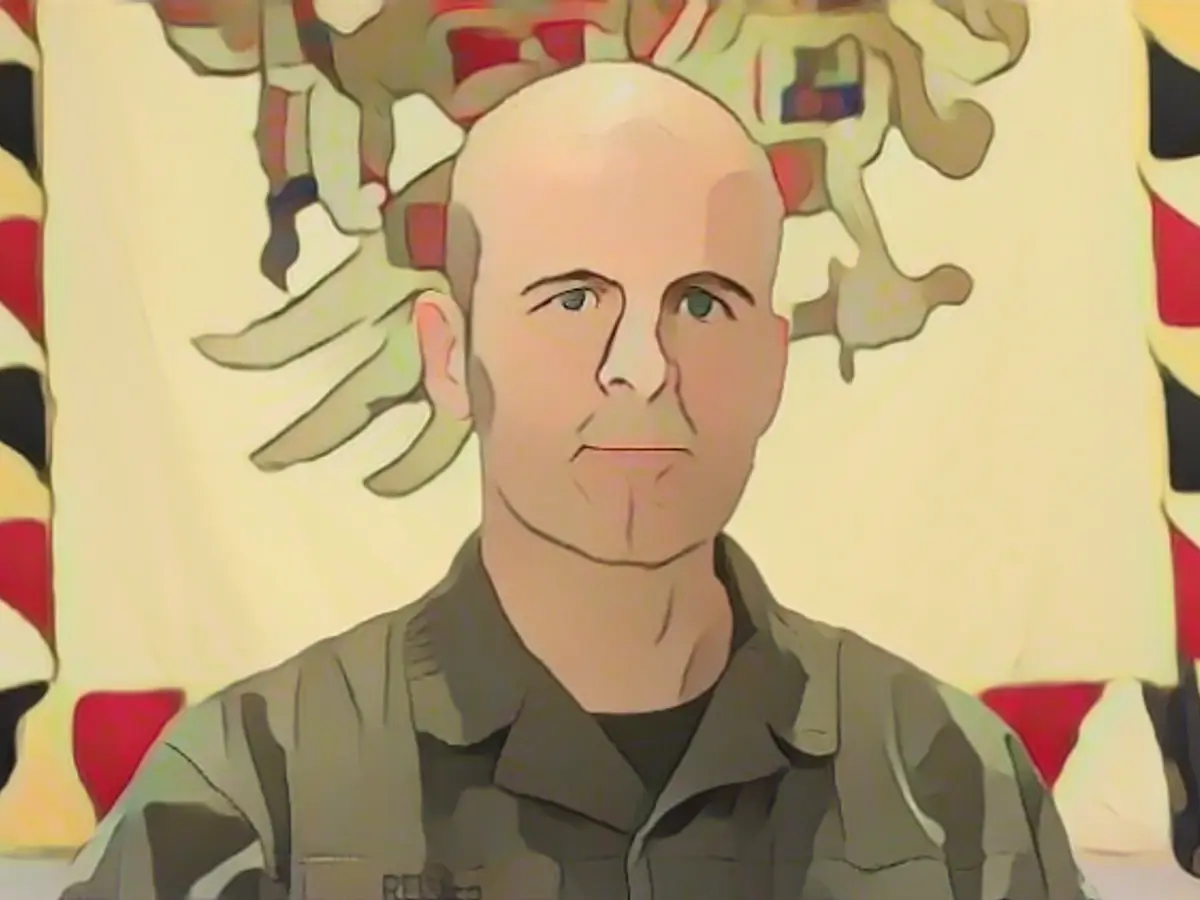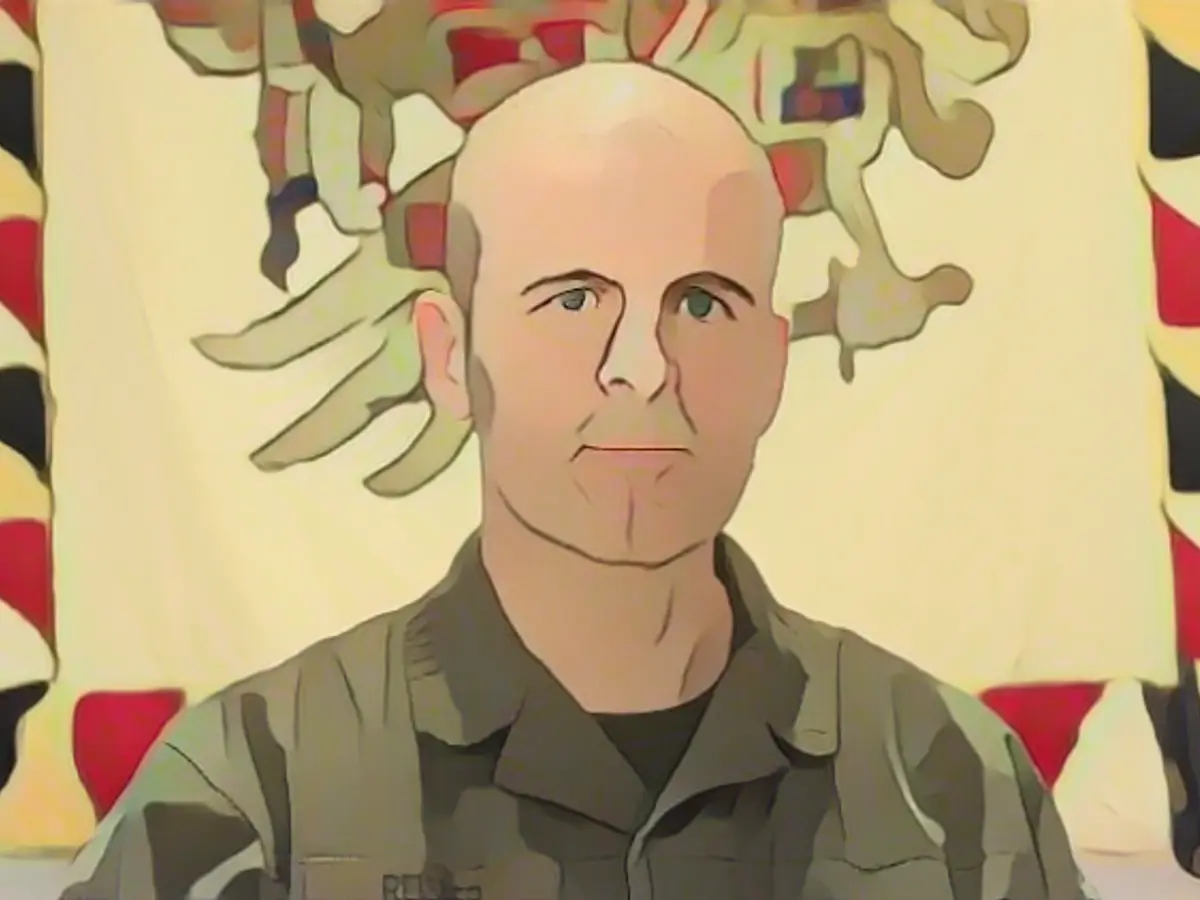"The Ukrainians were invisible to the Russians"
At night and in fog, Ukraine succeeds in building several bridgeheads on the southern bank of the Dnipro. According to Colonel Markus Reisner, the success is of the utmost importance - and a dilemma for the Russians. Ukraine is thus showing "that it is very much in a position to regain the momentum for itself", said the military expert in an interview. However, the bridgeheads are not yet strong enough for an advance southwards.
ntv.de: Mr. Reisner, the week starts with positive news for Ukraine: They have managed to build several bridgeheads on the left bank of the Dnipro and bring hundreds of soldiers to the other bank. How did they do that?

Markus Reisner: Ukraine managed to control the electromagnetic field in a very intelligent tactical way. This is the field where drones are controlled via radio signals, where the connections to the command posts are established and the artillery's firing orders are called up. Ukraine has concentrated some forces along the riverbank north of Kherson and tried to form so-called local bubbles under which the armed forces have been operating.
What are local bubbles?
Local bubbles mean that the electromagnetic space controlled by the Ukrainians makes it impossible or very limited for the Russians to use their drones for reconnaissance. This means that they cannot determine targets for their artillery fire or for the use of air-to-ground weapons, which they repeatedly drop. Under the protection of these localized bubbles, the Ukrainians have managed to consolidate their forces, mass them and, in a next step, expand a bridgehead and link these bridgeheads together. But the weather also played a favorable role.
In what way?
Part of the wet weather in the region at the moment is that it is very often foggy in the morning. Under the cover of the fog and the secure electromagnetic space I mentioned, the Ukrainians were able to cross to the southern shore in boats: the Ukrainians were invisible to the Russians, and this has gradually increased over the last two weeks until Ukraine has even managed to bring individual armored vehicles to the other side. The problem, however, is that the bridgeheads are still not really resilient.
What does that mean?
If Ukraine wants to carry out an operation from there, then these bridgeheads need to be expanded and secured, i.e. reinforced. Then they need pontoon bridges to bring really heavy equipment to the south side, to actually turn a tactical success into an operational success.
How many bridgeheads has Ukraine now built in total?
There are different sources. But there are at least three, one of which is really significant. This is the bridgehead near Krynky, the extent of which is relatively extensive.
According to the Ukrainian military, they have already pushed the Russians three to eight kilometers away from the river. That sounds like a lot when you consider how progress on other sections of the front is usually only a few hundred meters.
Eight kilometers cannot be confirmed at the moment. The only thing that can be confirmed with certainty is what can actually be seen on film. In other words, you need videos from several sides in which you can see that Ukrainian soldiers are in a village, a bridge or a railroad line in order to be able to say that they have taken possession of this space. So far, in the Krynky area and near Dachi, they have managed to advance into the flooded area and have also established themselves. However, there is still no breakthrough out of this flooded area towards the south. This would be the case at Krynky if Ukraine succeeded not only in taking the village to the south, but also in reaching the extensive forest area behind it.
Russia is said to have lost up to 3,500 soldiers during the advance on the Dnipro, 1,200 of whom are reported to have fallen. Is this information correct and if so, why are the Russian losses so high?
You have to be careful here. Both sides claim horrendous losses for the other side. Here too, you can only judge whether there are high losses or not by looking at the trend, which can be seen from watching many different videos. One example: In Avdiivka in mid-October there were several very heavy-loss advances by the Russians. You could see that because videos from Ukrainian drones showed that dozens of vehicles had been destroyed and dozens of soldiers killed. That was an indicator of high casualties. Of course, you can't put an exact figure on this because both sides are trying to keep their own casualty figures low and those inflicted on the enemy high.
And there are no such videos of the south bank of the Dnipro?
There are dozens of videos of Ukrainian drones along the Dnipro, from Kherson to the east, which do indeed attack Russian positions. In contrast to Avdiivka, however, there are no such extensive attacks from Ukraine, which would also have led to high casualties on the Russian side. These casualty figures should therefore be treated with caution. The Russian units on the ground are also still holding their positions.
Nevertheless, the crossings on the left bank, which until recently was still fully occupied, are a much-needed success in the faltering offensive. What is the significance of the advance for Ukraine and what are the consequences for the Russians?
This operation is very important for Ukraine because it has managed to draw attention to itself again in the information space and distract attention from the fact that the Ukrainians are currently under a lot of pressure, especially in the east. The main point is that Ukraine must not disappear from the public eye and that it makes sense in the eyes of the allies to continue supporting Kiev. In the last two weeks in particular, there have been many media reports - especially in English-speaking countries - that have questioned very critically how things will continue and that Ukraine must be honest about the offensive. These successes show that Ukraine is very much in a position to regain the momentum for itself. Of course, we now have to wait and see whether this success can actually be extended.
And for the Russians?
Russia has the dilemma that dominance in the information space has once again fallen to Ukraine.
What is the situation on the rest of the front, are both sides still in a stalemate there?
In Avdiivka, the Russian side is still advancing slowly but steadily. You can see this above all northwest of the village, where they have managed to advance along the railroad line and have even crossed it. There is very heavy fighting in the industrial area in the north-west and also on the southern edge, where the Russians are also advancing. Elsewhere on the front, the situation is unchanged: Between Kupjansk and Swatowe there is great pressure from the Russian side on the Ukrainian side. There is changeable fighting in the central area near Robotyne, where Ukraine attempted another advance on Sunday, but was defeated. Ukraine's greatest success at the moment is along the Dnipro River.
As you say yourself, this is primarily aimed at ensuring that the West continues to support Ukraine. The EU wants to supply Ukraine with one million rounds of ammunition by March. Is that enough in your opinion?
I think you have to ask the critical question of whether it wasn't actually agreed that this would be done by the end of the year. The fact that this has now been delayed until March actually means that the promises cannot be kept. It is also assumed that only around 300,000 pieces of ammunition can be delivered by the end of the year. That is only a third of what was actually promised.
In your opinion, what would Ukraine need to get through the winter without losing any territory to Russia and to prepare for an offensive in the spring?
Ukraine is now slowly approaching a culmination point and this will be decided by the West's support for Ukraine. If the West wants Ukraine to continue to be able to fend off Russian attacks or even recapture territory, then the West must support the country more than before - and significantly so. Not only with artillery, but also with a range of other weapons systems. If this is not the case and the West is not prepared to do so, then Ukraine will be forced to set its sights more narrowly. Presumably, Ukraine's goal will then be to consolidate itself over the winter so that it is in a position to carry out new actions in the spring. Everything stands and falls with the support of the West.
Vivian Micks spoke with Markus Reisner
The success of Ukraine's bridgeheads on the southern bank of the Dnipro is causing a dilemma for Russia, as it shows Ukraine's ability to regain momentum.
Despite the success of building bridgeheads near Kherson, Russia still controls the area, and Ukraine must expand and secure these bridgeheads to turn tactical success into operational success.
Source: www.ntv.de








